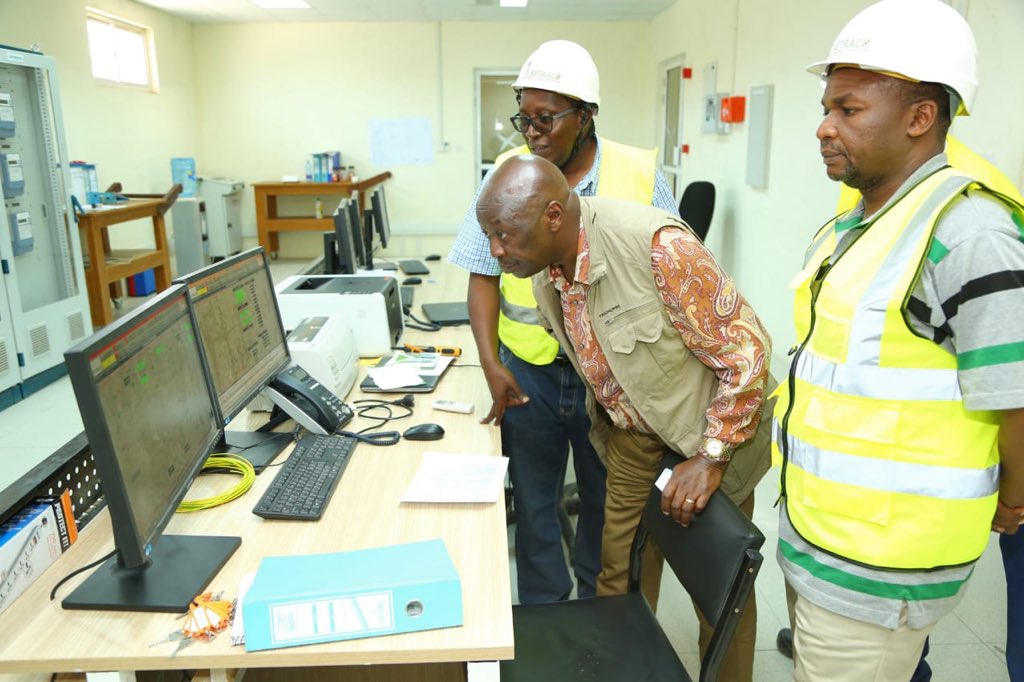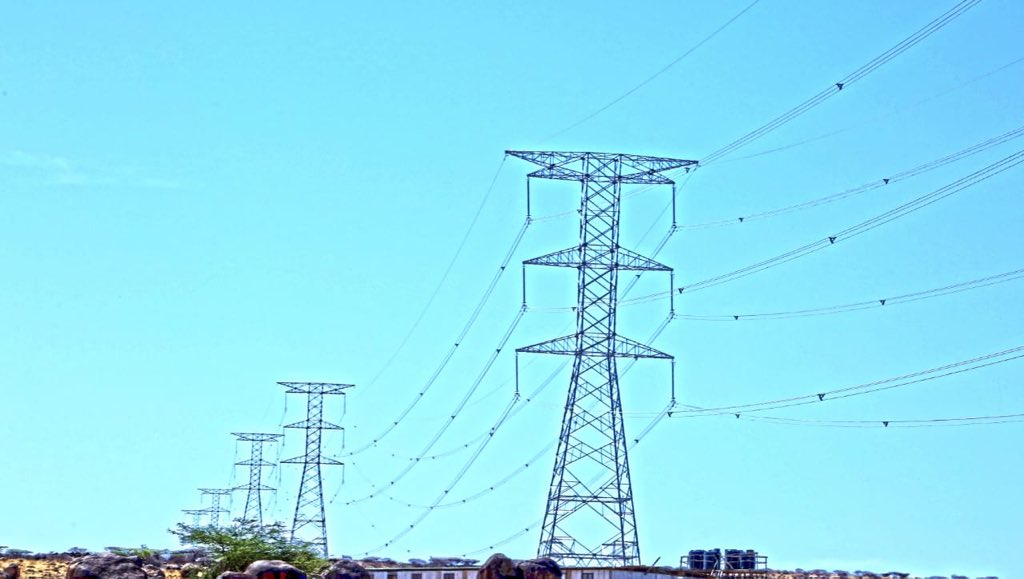Nivlark
JF-Expert Member
- Jul 19, 2013
- 385
- 293
wamezindua sana sasa imebaki wazindukeKuzindua tena yani kila siku JPM anazindua the same thing bila any progress, Danganyika republik ni shithole kabisaaaaa.
wamezindua sana sasa imebaki wazindukeKuzindua tena yani kila siku JPM anazindua the same thing bila any progress, Danganyika republik ni shithole kabisaaaaa.
Kilaza kama kawaida yakoKuzindua tena yani kila siku JPM anazindua the same thing bila any progress, Danganyika republik ni shithole kabisaaaaa.
MachunguKuzindua tena yani kila siku JPM anazindua the same thing bila any progress, Danganyika republik ni shithole kabisaaaaa.
mwenye wivu hakosi kuona doa kama kawa, CCCC ndo wamejenga reli nyigi sana kule china, kama hii hapa ya chengdu-chongqi High speed railway ambayo train zinasonga kwa 350km/hr!, nguzo ni hizo hizoMbona kama vile nguzo afya zake ni mgogoro tupu


Hakuna wivu bora salama,maana wanaitwa chineesemwenye wivu hakosi kuona doa kama kawa, CCCC ndo wamejenga reli nyigi sana kule china, kama hii hapa ya chengdu-chongqi High speed railway ambayo train zinasonga kwa 350km/hr!, nguzo ni hizo hizo

Hii nayo Xi'an-Baoji HSL inayosonga 300km/hr nguzo ni hizo hizo, kampuni iliojenga ni hiyo hiyo

Nyinyi watu lisheni wasiojiweza, pelekeni watoto shule, jenga mahospitali, ongeza viwanda na kadhalika. Hivyo ndivyo nchi masikini hujikwamua kutoka kwa lindi la umasikini. Ukiwa masikini na uamue kutumia mshahara wako wote kulipa rent basi utakufa njaa. Hivyo ndivyo sector zingine za T.Z zitawachwa nyuma eti kwa sababu serikali yenu inataka kuringa eti mna reli ya umeme.Tanzania secures $7.6 billion financing deal from Chinese lender to build new railway

President John Magufuli with China Exim Bank president Liu Liang after holding talks at Chamwino State Lodge in Dodoma this week. PHOTO | COURTESY
In Summary
- Dar es Salaam is positioning itself as a regional hub, upgrading its port to attract more business from its neighbouring landlocked countries.
- The EAC railways master plan incorporates the standard gauge railway’s Northern and Central Corridors, which are both commercially viable for landlocked countries in the region as they give them strategic access to the ports of Mombasa and Dar es Salaam.
- The Northern Corridor Integration Projects championed by Rwanda, Kenya and Uganda spearheaded the establishment of a railway link from Mombasa to Kigali.
- In June 2013, a Northern Corridor Integration Projects Heads of State Summit held in Kampala put in place mechanisms for fast-tracking the development of the SGR.
Tanzania has secured a $7.6 billion loan from China’s Export-Import Bank (Exim) for the construction of a railway line that will link it with Burundi, Rwanda and Democratic Republic of Congo.
President John Magufuli secured the concessional loan after meeting with the Exim Bank’s president Liu Liang.
President Magufuli, while announcing the funding, alluded to a preferential deal without providing details.
Oil and gas discoveries have turned Tanzania into an exploration hotspot, but the country’s transport infrastructure has suffered from decades of under investment. The country is also positioning itself as a regional hub, upgrading its port to attract more business from its regional landlocked neighbours.
According to Mr Liu, China Exim Bank will offer Tanzania technical support.
READ: China Exim sets terms for financing Uganda’s SGR
ALSO READ: Rwanda looks to Tanzania for rail transport as Uganda falters on SGR
Last year, Tanzania announced that it had awarded rail contracts to a consortium of Chinese firms led by China Railway Materials (CRM), which included the standard gauge rail project.
The Exim Bank is also financing a $1.2 billion, 532km natural gas pipeline in Tanzania.
On Wednesday last week, Finance and Planning Minister Dr Philip Mpango after a meeting with Dr Alberic Kacou, African Development Bank vice-president for human resources and corporate services, announced that Tanzania had secured a further $200 million loan from the AfDB to finance transport infrastructure projects.
“We will use some of this funds towards the construction of the SGR project to transform the country’s infrastructure,” Dr Mpango said.
In an interview with Bloomberg, Gerson Msigwa, a spokesman for Tanzania’s presidency, said the construction will start by July next year. Before then, Tanzania and Exim Bank China will be expected to have finalise technical issues on the contract and sign the financing deal for the 2,190km project.
Tanzania Transport Minister Samuel Sitta said the SGR will have a main line that will connect the port city of Dar es Salaam to Rwanda and Burundi, with additional branch lines running within the country.
“We expect to have two offshoots: One of them to Mwanza, which will open up the lakeside port city and link it with Uganda, while the second one will link to the coal, iron ore and soda ash mining areas in the south. Through this, we expect an increase in cargo on this route,” Mr Sitta said, adding that will be at an additional cost of $6.6 billion.
Already, Tanzania has signed contracts with China Railway No 2 Engineering Group to build a rail link between the southern port of Mtwara, which is rich in coal, iron ore and natural gas. The contract will see China Railway No 2 Engineering Group provide 10 per cent of the funding with the rest provided by the government.
Kenya is also constructing a $3.27 billion 609km new standard gauge railway line between Mombasa and Nairobi to boost the movement of cargo from the port.
However, queries have been raised over the economic viability of SGR, after key landlocked states indicated their intention to connect to the Indian Ocean through Tanzania.
The issue of cost is also bound to arise now that Tanzania’s SGR is four times longer than Kenya’s but only two times as expensive.
In a previous interview with The EastAfrican, Kenya Railways managing director Atanas Maina said that the cost of the Kenyan SGR was high because of the design adopted, which will see the train maintain an average speed of 80 kilometres irrespective of the terrain.
“We have built bridges, and raised the track in areas where we would have had corners to achieve the average speed we expect the wagons to travel at. This has increased the costs immensely as compared with the neighbouring Ethiopia and Tanzania SGER designs that haven’t taken this into account,” Mr Maina said.
Recently, a confidential World Bank report cast doubt on the region’s push for the SGR projects, saying they would only be viable with increases in cargo of between 20 tonnes and 55 million tonnes per year.
The report done by the Africa transport unit at the World Bank titled The Economics of Rail Gauge in the East Africa Community showed that the volumes of the forecasts undertaken for the EAC railway master plan and central line in Tanzania, are unattainable over the medium to longer term.
“Based on these assumptions, there is no economic or financial case for standard gauge in the EAC area at this time. A refurbished meter gauge network would appear to be the most appropriate option in economic and financial terms, and could easily accommodate forecast traffic up to 2030, with lower investment requirements,” the report concludes.
The World Bank team highlighted the rehabilitation of the existing railway network as the best alternative, which would allow a phased approach to the regions development, consistent with current and projected demand and the financing envelope available.
The SGR alternative, which the regional governments chose, involves the construction of a standard gauge railway on a new right of way, an option the World Bank team said required additional investment in land acquisition and structures, and new right-of-way construction.
“This alternative predicates axle loads in the order of 25 tons per axles and a maximum operating speed of up to 120 km per hour. Again, based on these assumptions, the estimated maximum carrying capacity of the current network would exceed 60 million tonnes per year. The estimated investment cost per km will be $ 3.25 million,” the report said.
From the estimates provided, the Tanzanian new railway line will cost an average of $3.4 million per kilometre.
MY TAKE
It is time now to look at the cost of the two rails as we know cost of construction is very important for prospect of any infrastructure! i welcome bright minds to contribute and not some propaganda in here!
nomasana, sam999, NairobiWalker, hbuyosh, msemakweli, simplemind, Kimweri, Bulldog, MK254, Kafrican,Ngongo, Ab_Titchaz, mtanganyika mpya, JokaKuu, Ngongo, Askari Kanzu, Dhuks, Yule-Msee, waltham, Mzee, mombasite gabriel, Juakali1980, Boda254, mwaswast, MwendaOmo, Iconoclastes, oneflash, Kambalanick, 1 Africa, saadeque, burukenge, nyangau mkenya, Teen-Upperhill Nairobi, kadoda11
awesomeKwa wale wote waliokiri reli ya Kenya haina uwezo wa kubeba double stacked containers CC: akina mkikuyu ali timamu, geza ulole, aneal... and co.
Eat your own matapishi!
A first in Africa, double stacked containers on a wagon.
View attachment 880311









Hivi unajua average waiting time ya kontena kushukishwa kwa meli hadi inapotoka kwa bandari kenya ni 4days wakati Tanzania ni 7 days. Hata muwe na treni ya speed ya 500km/hr, you’ll still be 2 days behind even before you load your containers on the SGR.Yote ya yote reli ya kenya ni upuuz mtupu,80km/sini-uchafu huu A TORTOISE
Nani amekuambia!!!? Pia Dar port sku hizi imeboreshwa sana na speed ya kupakua containers imeongeza mara dufu sichin ya sku 4..Lakini hongeren kuhusu uwezo wa sgr yenu kubeba Double stack container...Lakn kumbukeni pia ya kwetu inatakuwa na uwezo huo.Hivi unajua average waiting time ya kontena kushukishwa kwa meli hadi inapotoka kwa bandari kenya ni 4days wakati Tanzania ni 7 days. Hata muwe na treni ya speed ya 500km/hr, you’ll still be 2 days behind even before you load your containers on the SGR.